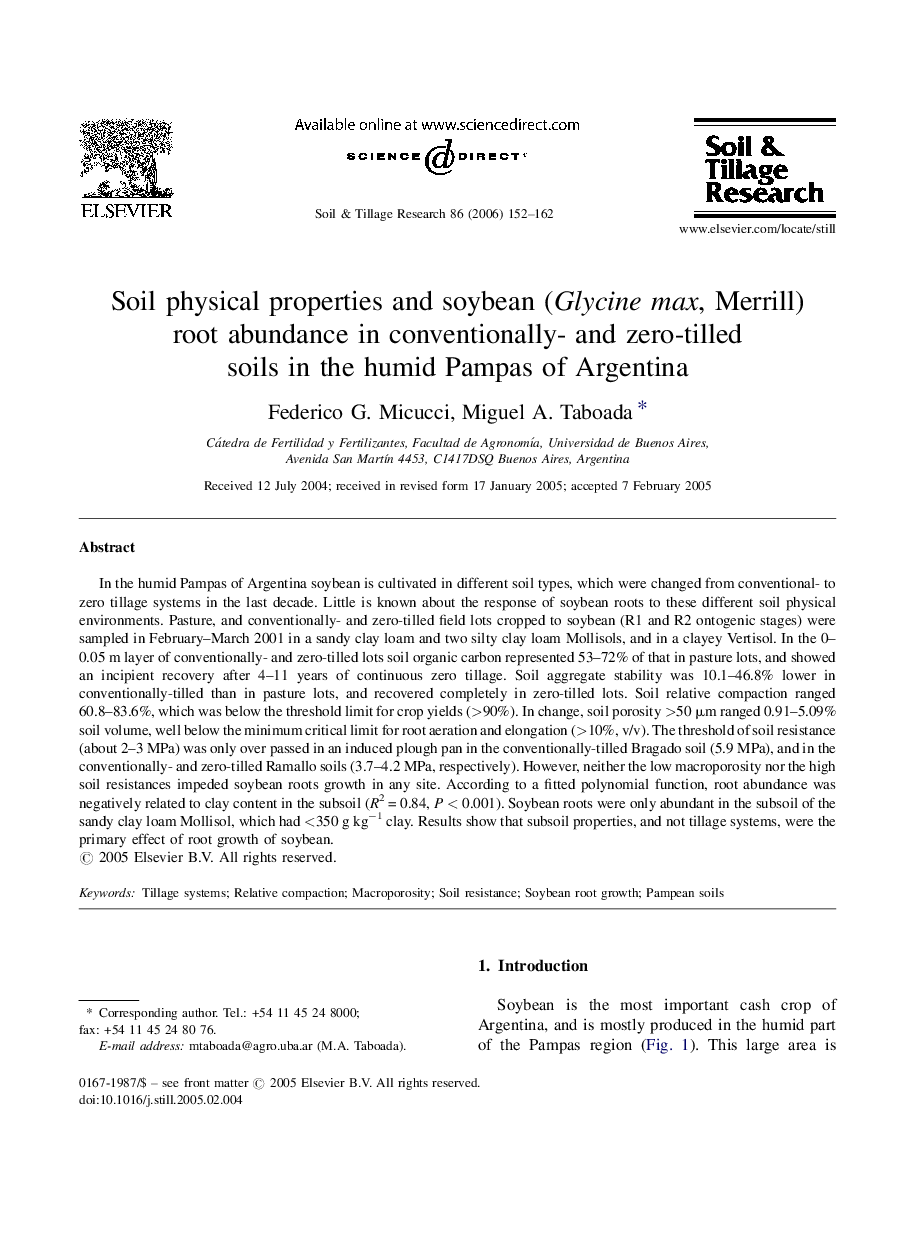| Article ID | Journal | Published Year | Pages | File Type |
|---|---|---|---|---|
| 306884 | Soil and Tillage Research | 2006 | 11 Pages |
In the humid Pampas of Argentina soybean is cultivated in different soil types, which were changed from conventional- to zero tillage systems in the last decade. Little is known about the response of soybean roots to these different soil physical environments. Pasture, and conventionally- and zero-tilled field lots cropped to soybean (R1 and R2 ontogenic stages) were sampled in February–March 2001 in a sandy clay loam and two silty clay loam Mollisols, and in a clayey Vertisol. In the 0–0.05 m layer of conventionally- and zero-tilled lots soil organic carbon represented 53–72% of that in pasture lots, and showed an incipient recovery after 4–11 years of continuous zero tillage. Soil aggregate stability was 10.1–46.8% lower in conventionally-tilled than in pasture lots, and recovered completely in zero-tilled lots. Soil relative compaction ranged 60.8–83.6%, which was below the threshold limit for crop yields (>90%). In change, soil porosity >50 μm ranged 0.91–5.09% soil volume, well below the minimum critical limit for root aeration and elongation (>10%, v/v). The threshold of soil resistance (about 2–3 MPa) was only over passed in an induced plough pan in the conventionally-tilled Bragado soil (5.9 MPa), and in the conventionally- and zero-tilled Ramallo soils (3.7–4.2 MPa, respectively). However, neither the low macroporosity nor the high soil resistances impeded soybean roots growth in any site. According to a fitted polynomial function, root abundance was negatively related to clay content in the subsoil (R2 = 0.84, P < 0.001). Soybean roots were only abundant in the subsoil of the sandy clay loam Mollisol, which had <350 g kg−1 clay. Results show that subsoil properties, and not tillage systems, were the primary effect of root growth of soybean.
